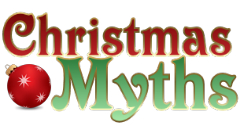 Even Some ‘Religious’ Elements of Christmas Celebrations Stray from the Truth, Says Bible Publisher-Scholar
Even Some ‘Religious’ Elements of Christmas Celebrations Stray from the Truth, Says Bible Publisher-Scholar
If you’re in business, you likely don’t even call this the holiday season anymore – it’s “the holiday quarter.” Because for businesses, Christmas is all about making money.
“In Western societies, Christmas has largely become a family and commercial celebration for which the historical event – the birth of Christ – is a pretext,” says Christian E. Megrelis, www.christian-megrelis.com, chairman of the French Bible Society, former vice chair of the United Bible Societies and author of “Glossary of Hope,” a contemporary distillation of New Testament teachings and their applications.
“When Eastern churches began celebrating the birth of Jesus, they sought to keep the religious event distinct from the family and gift-giving event by separating the dates,” he says. “That’s why in Orthodox churches, gifts are not offered on Christmas Day, but rather on Jan. 2, St. Basil’s Day, and thus are linked to the New Year celebration.”
But Western churches, which adopted the Nativity celebration first, meshed the two practices, which led to secularization, Megrelis explains.
“The West’s Christmas celebration is partly responsible for the secularization of Western societies,” he says.
Some of our most important religion-oriented holiday traditions don’t even jibe with the story told in the official historical record of Jesus’ birth: the Bible, Megrelis says. He offers these examples.
• Animals in our manger scenes. The canonical Bible – the books of the Bible considered to be Holy Scripture – does not mention sheep, donkeys or other animals watching over the newborn Jesus. The animals are from the apocryphal gospels, writings by early Christians that were not included in the New Testament because their authors were anonymous, unverifiable or otherwise dubious. These include the “infancy gospels” written during the second century to feed a hunger for more detail about Jesus as a baby and young boy.
“The Gospels of Matthew and Luke say only that Jesus was placed in a manger – a feeding trough for animals,” Megrelis says. “They do not say whether the manger was in a stable or what animals were about. Those details came from the infancy gospels.”
• Our images of a pregnant Mary riding to Bethlehem on a donkey. Again, the New Testament makes no mention of Mary on a donkey. But according to the apocryphal gospels, Joseph saddled a donkey and “set Mary upon it” for the trip to Bethlehem.
• “We three kings of Orient are.” Contrary to the popular Christmas carol, the Bible does not say how many wise men visited the infant Jesus. The only reference to “three” is the number of gifts they brought: gold, frankincense and myrrh. The carol has them traveling a great distance and our traditions have them arriving at a stable.
“In fact, the Bible says, ‘On coming to the house’ – not stable – ‘they saw the child with his mother Mary, and they bowed down and worshiped him,” Megrelis says, adding “No one knows where the wise men came from. It could not have been very far, as we are told that Jesus was brought to Jerusalem as soon as Mary has been purified, in keeping with Jewish tradition, and shortly after his circumcision, which would have been at eight days old.”
Giving one another gifts was also not part of the biblical Nativity, Megrelis points out.
“The wise men brought gifts because it was customary to bring gifts when one visited royalty, but the Bible doesn’t mention an exchange of presents,” he says.



